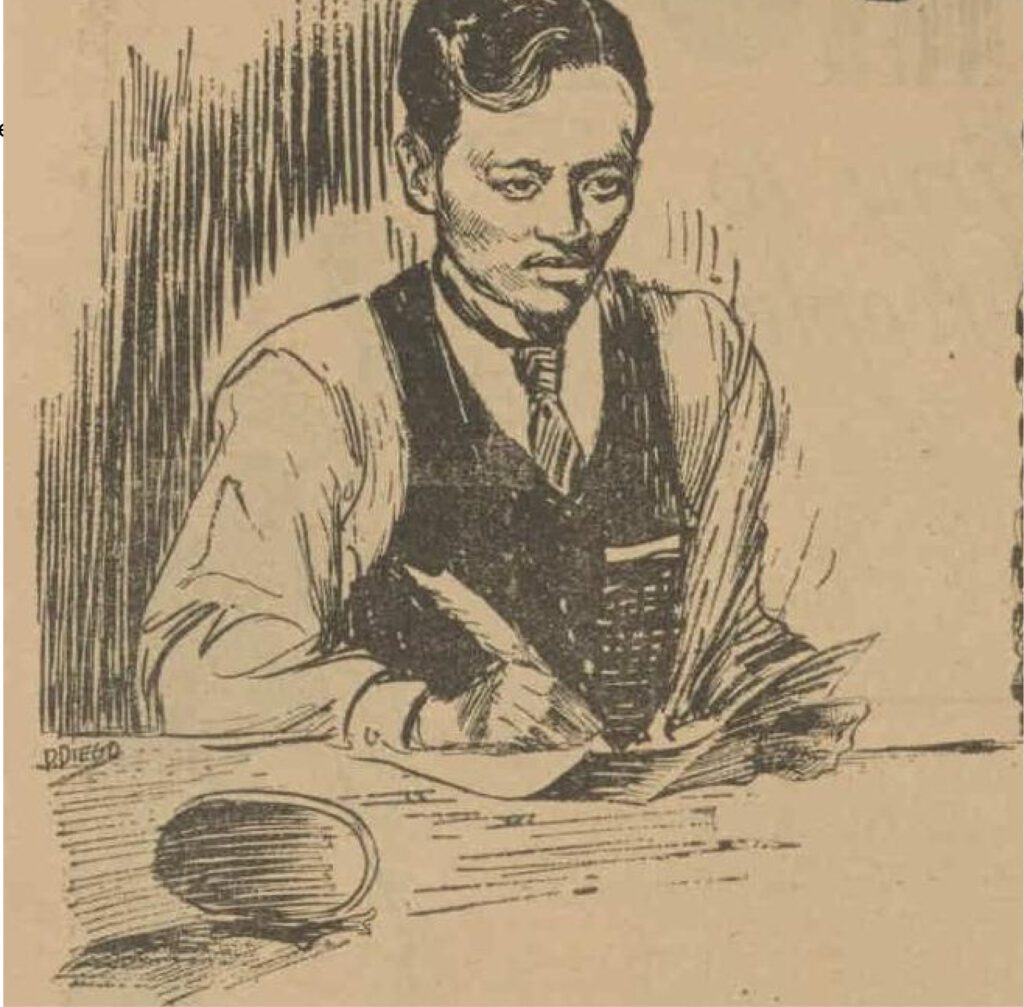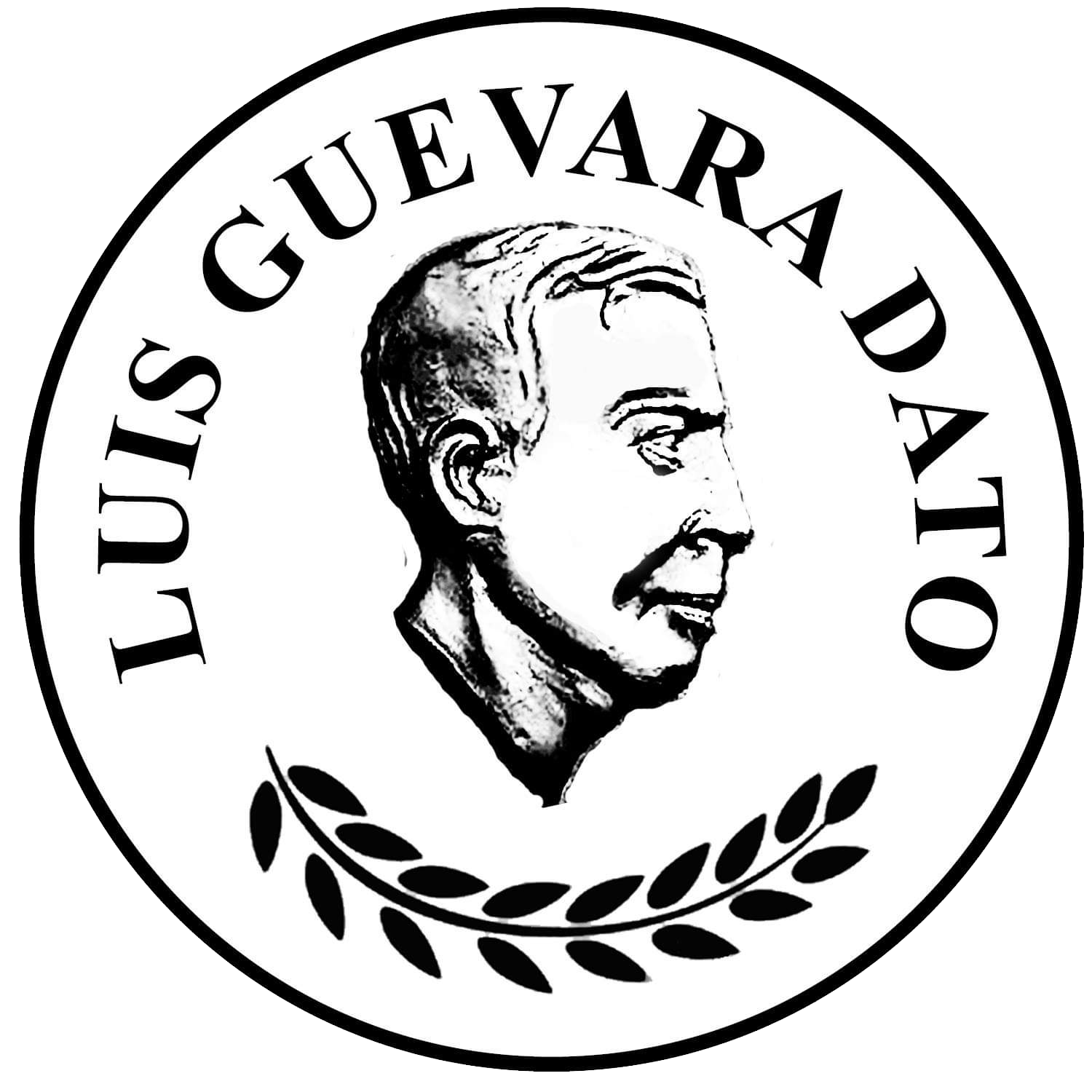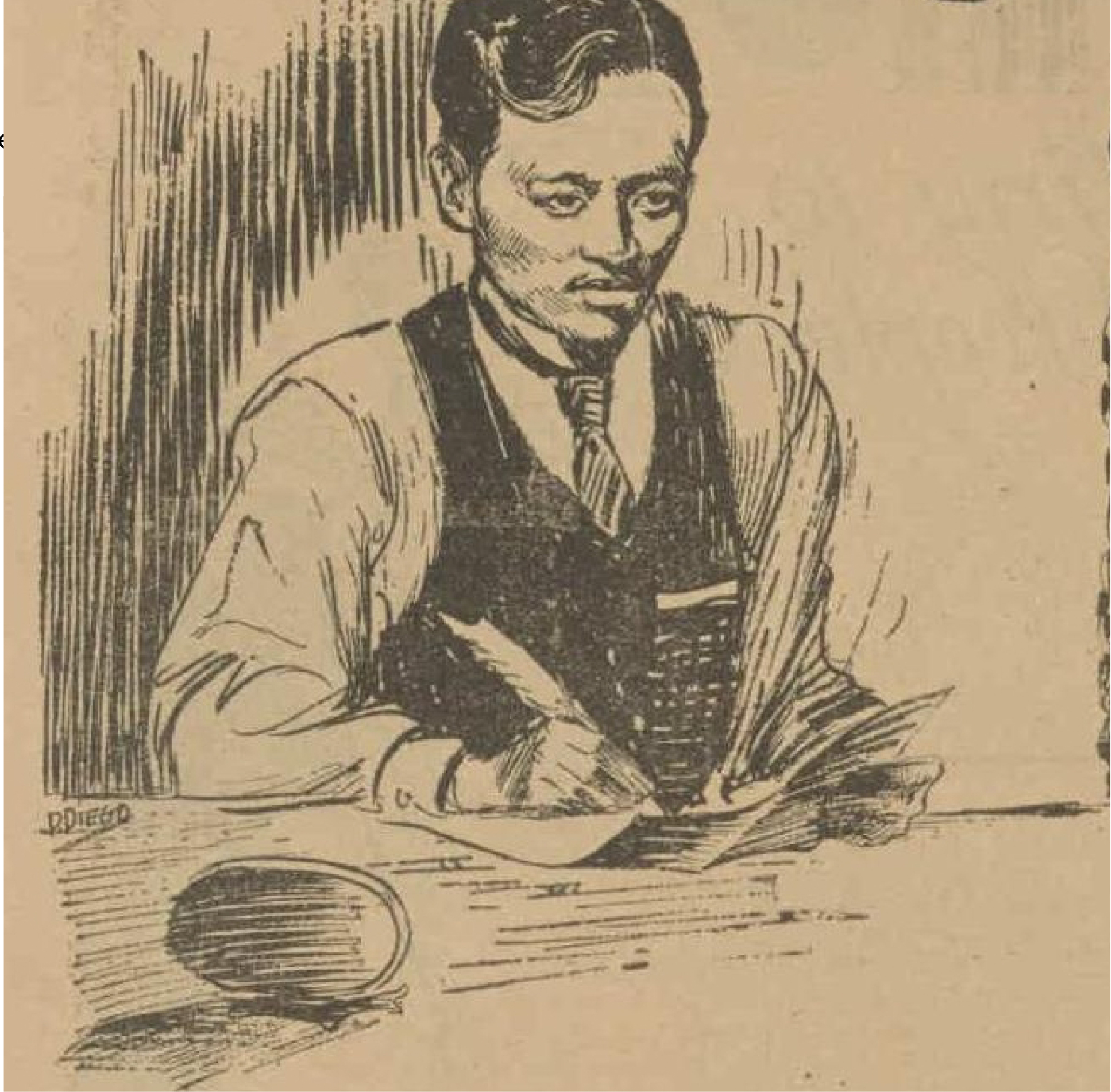In Luis G. Dato’s “An Autobiographical Sketch” in 1978, he mentioned that he was the first Filipino to translate Jose Rizal’s “Mi Ultimo Adios” into English. I found this newspaper Archive from The Tribune from the National Library of Australia. Enjoy!
News Archive from The Tribune (Philippines : 1932 – 1945), Sunday 31 December 1933, page 10
“Mi Ultimo Adios” English Versions
Compiled by E. Arsenio Manuel

The number of English versions of Dr. Jose Rizal’s last farewell poem has been the subject of varied conjectures in the past. The first attempt to list it was made by Rizal’s Spanish biographer, Wenceslao E. Retana. Of the three English translations he noted, the authorship of two can now be discredited. In the works of the Rizalian scholar, Prof. Austin Craig, only two translations could be found printed. The joint-authors, Messrs. Charles Edward Russell and E. Rodriguez, in their book published in 1923, were, however, positive that “there exist in English two versions” of this immortal poem. (See. “The Hero of the Filipinos,” p. 296.) Mr. Jose P. Santos, a very young historical writer, on the other hand, has wisely uncommitted himself. Writing in 1929 he said : “In English alone, this has been translated six or seven times..’..” (See, “Abusing Our Hero’s Name,” Graphic, June 19, 1929). He did not, however, enumerate the names of the translators. Mr. Leopoldo Yabes, a prolific local writer was most positive of them all. “In English six translations exist at present, four by Americans, one by an American and a Filipino, and one by a Filipino.”
The present collection of course is not the first of its kind. An earlier attempt has been made by Professor Jaime C. de Veyra. His collection originally consisted of some five English translations to which Mr. Yabes’ list was later on added. Unfortunately, however, the de Veyra collection is not yet fully annotated. The addition of Mr. Yabes’ work augmented the few faults that it has. Therefore, the whole work is not so reliable and satisfactory as it should be. Besides it is not yet published, hence not easily accessible to the reading public. I am also aware that there is something much to be desired by way of bibliographic data in this compilation.
The present collection is intended to clarify in a modest way some translations of doubtful authorship. I do not claim for it much originality, although I would say that six English translations were already known to me beforeI1 saw the de Veyra collection, which I should confess, largely facilitated my work. I have also tried to cite sources and dates whenever available. This was made possible by going to the original sources and writing to the translators. I think these are essential in a work of this nature. Space and ability, however, precluded the writer from making an evaluation of the literary merits of each and every one of the different versions listed. The same may be the subject of a critical study by abler and more enterprising pens.
It is worthy of observation that the translators seemed to have worked independently of each other, and that what impelled them to write their own was the dissatisfaction they manifested with the then existing translations.
For purposes of chronological arrangement of all versions, the first offered difficulty. Let it be stated that on arriving upon any conclusion, we have relied mainly on imprint dates and other internal bibliographic evidence, and other extraneous aids. There is evidence to show beyond reasonable doubt that Cooper never translated Rizal’s last poem, and therefore Mr Yabes’ claim that Cooper was the first translator can be discarded immediately. What shall now claim our attention is the authorship of the first translation in view of the fact that it was published in the same >ear under different names. According to a bibliographic note in Retana’s “Vida.” this translation was done by Howard W Bray. Dr. Francisco Villanueva. Jr., recently claimed that it was the work of an Italian by the name of Zanoni Volpicelli. See, “A First Translator of the ‘Ultimo Adios’ “, Free Press , December 27, 193b). The conflicting evidence are the following. We shall deal first with Volpicelli’s. The translation was published in the New York Hoynhl, European Edition, May 22, 1398. In a letter to the editor of the New York Herald Volpicelii said: “The enclosed translation may interest you” and “I do not think you ever published a translation of the remarkable verses…” This was dated at Milan, May 15. 1898. The extraneous evidence consists of a personal interview had by Dr. Villanueva, Jr., with Volpicelii. The latter narrated to the former how he came to translate the poem at the outbreak of the Spanish-American war “believing that its publication would help the cause of the Filipinos.” Volpicelii had a perfect command of both the English and Spanish languages.
On the other hand, we have the following facts on Bray’s. The brochure which contains the translation has the following data on its title page, omitting unnecessary details: “Biography / of / Dr. Jose Rizal / By / Dr. Ferdinand Blumentritt /. Translated from the original German, with Notes and an Epilogue ! by / Howard W. Bray / Singapore / 1898 In his “Translator’s Preface” Bray claimed to have “undertaken this work.” The preface bears the date 1898; the “Epilogue,” January 1898. Bray was an old resident of the Philippines, and a friend and admirer of Rizal.

The question that now arises is, Who was the translator of this version? The internal evidence in both of cases do not show positively that one or the other was the translator. Although Volpicelli verbally admitted having done the work, it could not possibly have been done before May first, 1898, since the Spanish-American war mentioned could only refer to the outbreak of hostilities in the Philippines, for it was attempted with the end in view to help the cause of the Filipinos. Inasmuch as the “Epilogue” bears the date of January, I 1898, there is ground to suppose that the translation was already done i prior to, or at, that date. If this fact is given some consideration, it will militate against the probability of Volpicelli having done the work. One fact, however, prevents us from concluding that this translation is Bray’s. That is, it is also possible for Bray to have written the epilogue January, 1898, and to have secured the translation later on. The imprint date, 1898 (which might possibly be after May 15, 1898), of “The Biography” would seem to justify the presumption. The failure to state in the title page of “The Biography” anything about the translation lends support to this presumption. While the whole of the internal evidence taken together would tend to incline on the side of Volpicelli, the corroborative evidence given us by Dr. Villanueva, Jr., makes our finding conclusive.
The second English version is done in prose by F. M. de Rivas of Chicago. It can be found in pages 189-190 of Murat Halstead’s book, “The Story of the Philippines,” copyrighted 1898. It should be noted that the word “version” includes prose translations as Webster defines this term. This is the only prose translation among the eleven.
An anonymous version done into English from the French translation of Henri Lucas and Ramon Sempau appears in “An Eagle Flight.” copyrighted 1900 by McClure, Phillips & Co., pages xii-xiii. This is the translation, a major portion of which was read on the floor of the United States Congress by Representative Cooper in June 19, 1902. It is therefore obvious that Cooper never translated the “Mi Ultimo Pensamiento” as Retana and Mr. Yabes claimed.
The translation made by Elisalbeth Pattens, the fourth in point of time, has not been published heretofore. According to Dr. Jose P. Bantug, who has a copy of the manuscript, this translation Was done in 1901-1902. In view of a more recent investigation, it would seem that February-May, 1900, is the more proximate date.
A heretofore unknown translation is the one rendered by E. E. Schneider, sometime assistant professor of modern languages at the College of Agriculture and School of Forestry, University of the Philippines, at Los Banos. This was first published in The Citizen (El Ciudadano), September 12, 1918. It was, however, written many years prior to that date. “I started and finished it on a rainy Sunday in November, 1904,” Mr. Schneider wrote the author. “The effort of reproducing the thought and, at the same time, preserving as nearly as possible the exact metrical form of the original are his criteria for judging the merit of the translation. The most widely known version is that one done by Charles Derbyshire. This was first published in the Philippine Education (now Philippine Magazine ) in its issue for March, 1911. This is the translation always found in books for use in Philippine schools.
Captain Holland Rubottom, then of the United States army, made a translation which was published for the first time in the Philippine Education for December, 1916. It is the longest of the translations. A quite interesting translation is that rendered by Yoshinaga Mikami, a Japanese. It was first road before the Filipino community in Tokio on December 30, 1921, and subsequently included in his book entitled “Conditions in the Philippine Islands,” published April, 1922. Due probably to a typographical omission the twelfth line, third stanza, of the original poem has not appeared in the translation.
The translation of Dr. Frank C. Laubach, a prominent missionary and educator, was begun in 1920 and reached the present stage after working over it for several months. “It was not my intention to try to make an exact translation, but reproduce the spirit of the poem.” It was first published in the Philippines Free Press for December 30, 1922, and later on included in his book, “The People of the Philippines,” copyrighted 1925.
Mr. Harold P. Scott, for sometime head of the English department, University of the Philippines, jointly with Mr. Carlos P. Romulo, then a professorial lecturer in the same institution, made a translation which appears on pages 63-68 of their work: “Rizal, a chronicle play in eight dramatic moments,” published in 1925. In the preface to their work they have this to say: “It is an attempt to reproduce in English, as nearly as possible, the metre, the rhyme scheme and the meaning of Rizal’s poem. Readers are asked to judge it with this difficult triple purpose in mind.”
A distinct honor goes to Mr. Luis Dato, for being the only Filipino who has translated Rizal’s last poem. Seven stanzas of his translation appear “in the Philippines Free Press issue for December 29, 1928, and in full in Sol Gwekoh’s “Poesias de Rizal.” The latter was, however, disclaimed by the translator when Mr. Yabes reprinted it. The unaltered translation which we are reproducing is the one found in the Philippine Collegian for January 8, 1932. We are responsible for dividing it into stanzas to conform to the original Spanish.
A distinct honor goes to Mr. Luis Dato, for being the only Filipino who has translated Rizal’s last poem.
Some general observations may now be made. There were found eleven versions in English of “Mi Ultimo Pensamiento.” Relying chiefly on imprint dates and other internal bibliographic evidence, and extraneous aids, it is now reasonably established beyond doubt that the first translation was made by Zanoni Volpicelli. Of the eleven versions, only one is purely Filipino; ten were translated from the original Spanish, and one from a French version; only one version is in prose; and the authorship of one translation is still unknown.
Of the eleven versions, only one is purely Filipino; ten were translated from the original Spanish, and one from a French version; only one version is in prose; and the authorship of one translation is still unknown.
In making this compilation I wish to acknowledge my indebtedness to the following persons who had ungrudgingly lent the author materials: Dr. Jose P. Bantug, Philippine Health Service; Professor Jaime C. de Veyra, Head of the Spanish Department, University of the Philippines; Mr. Luis Montilla, Chief of the Filipiniana Division, National Library; Professor Gabriel A. Bernardo and Mrs. Natividad P. Verzosa, Librarian and Cataloguer respectively. University of the Philippines Library. I owe special thanks of deep gratitude to the Editor and Manager of the New York Herald, European Edition, Mr. Lawrence Hills (Paris, France), for his sympathy and generosity in sending the author a two-sheet photostat copy _ of the New York Herald for May 22, 1898. This contains the Volpicelli translation. Without it no sound conclusion could possibly be made as to who the first translator is. I should confess that I had already made the conclusion that this translation was Bray’s when the photostat copy was received. In sending me the photostat copy Mr. Hills said in part: “I have been delighted to do this service for you and for the sake of your great poet and hero, for whom we as Americans have already conceived a great affection.”
The “Mi Ultimo Pensamiento” translation of the original Jose Rizal’s Spanish poem into English by Luis G. Dato can be found here.



As a staunch believer in our great hero Jose P Rizal and gifted with the superior facility in the English language, no doubt that Luis G Dato took it upon himself as the rightful poet to translate the immortal poem of our national hero. I wonder what course in college is the English translation taken up. Spanish 1 made the students memorize Mi Ultimo Adios.
Imagine being sentenced to die by firing squad and was still able to gather sense and compose the greatest poem of all time. Jose Rizal maintained his creativity before his demise. The greatest poet of the land. He inspired the mobilization of the revolution; and sparked the curiosity of a young poet in a small town of Baao.
[…] the well known translations of his ‘Mi Ultimo Adios’ into English are the ones by Zanomi Volcipelli, an Italian; M. […]
[…] Ultimo Pensamiento on the pages of Philippine Magazine ca1930s regarded as the first English translation of the poem of Rizal of a native Filipino. # historical# jose rizal# mi ultimo adios# […]